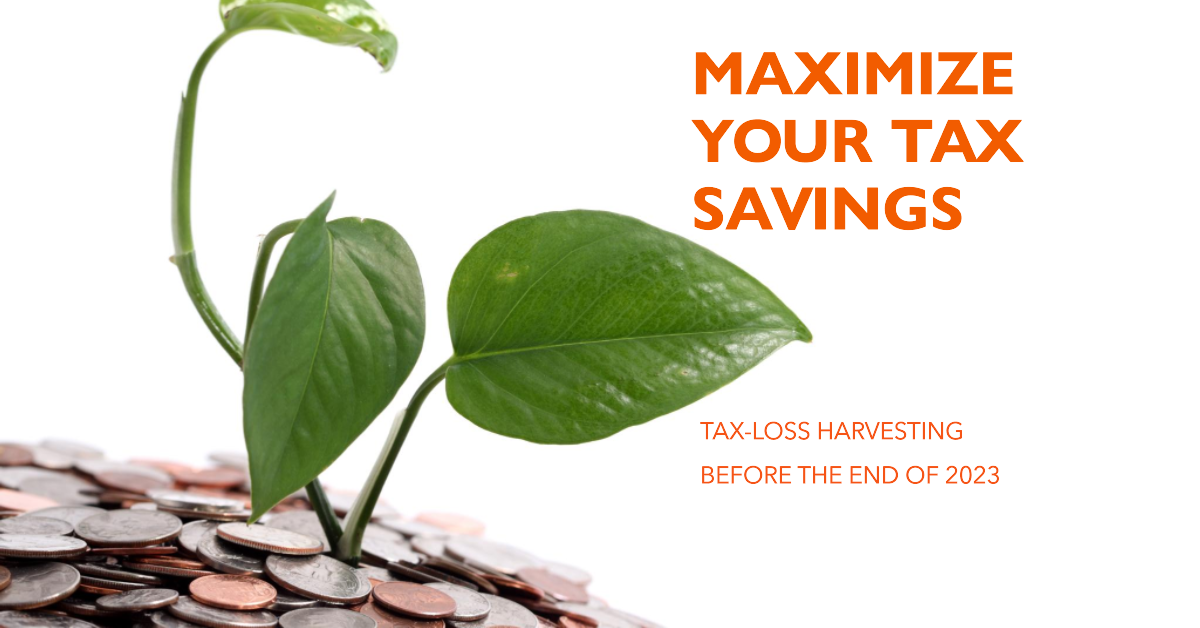Maximizing Your Tax Benefits in 2023: Tips for Tax-Loss Harvesting
There are silver linings with every up and down market. In 2023, asset classes have been moving between positive and negative territory all year. In the years when the market is down, it becomes very attractive to rebalance portfolios, purchase undervalued investments, conduct Roth conversions, and take advantage of tax-loss harvesting. How about for 2023? We have started to see the market trending into posititve territory and that begs the question if tax-loss harvesting make sense for this year. Whether the market ends in positive or negative territory it doesn’t really matter. The decision on harvesting tax losses is whether the opportunity is available for you and your specific investments.
What is tax-loss harvesting?
Tax-loss harvesting is a tax strategy that reduces the total amount of future capital gain taxes due. Generally, investors will select investments that hold sizeable capital gains. You will offset the profitable investment with an investment that has capital losses. If your capital losses for the year exceed your capital gains, you can deduct up to $3,000 in net losses from your total annual income. The Internal Revenue Service (IRS) rules allow the additional losses to be carried forward into the following tax years. This is often referred to as “carry forward loss.”
The main benefit of tax-loss harvesting is to capture tax-loss. Below are two different tax scenarios.
Example 1:
Security ABC
- Cost-basis = $100,000
- Value = $200,000
- Unrealized Gain = $100,000
Security XYZ
- Cost-basis = $200,000
- Value = $100,000
- Unrealized Loss = -$100,000
If you were to sell Security ABC and Security XYZ, the unrealized gain and losses would offset each other. The taxes owed would net to a realized gain/loss = $0.
Example 2:
Security ABC (S&P500 ETF)
- Cost-basis = $400,000
- Value = $350,000
- Unrealized Loss = -$50,000
Security XYZ (different S&P500 ETF)
- Purchased after the sale of Security ABC
- Cost-basis = $350,000
By selling Security ABC, you have captured a $50,000 tax-loss that you can either: offset future capital gains in perpetuity or reduce the current year’s income by $3,000/year. The investor also has not missed any market exposure.
Avoid the wash-sale rule
A wash sale occurs when you sell or trade securities at a loss, and within 30 days before or after the sale you:
- Buy substantially identical securities,
- Acquire substantially identical securities in a fully taxable trade, or
- Acquire a contract or option to buy substantially identical securities
Internal Revenue Service rules prohibit you from deducting losses related to wash sales. The wash sale rule applies to trades across all investor’s accounts, even between taxable and retirement accounts.
How To Prevent Purchasing Substantially Identical Securities
Investors will want to avoid selling and then repurchasing the same stock, class share, mutual fund, or ETF within 30 days. This would incur the wash sale rule. The IRS does not consider most mutual funds or ETFs as identical securities. In theory, you could sell a Vanguard S&P 500 ETF and purchase the Fidelity S&P 500 without incurring the wash sale rule. This would allow you to capture the tax-loss in 2022 while simultaneously staying in the market.
Summary:
Consider looking at your taxable investments’ unrealized gains and losses before the end of 2022. Current market conditions are ripe with opportunity to take advantage of tax-loss harvesting. If you follow a long-term investing approach, then most likely, you have accrued sizeable gains over the past few years. Look at paring down those investments with the largest capital gains.
Roth conversions are another opportunity to consider before the end of the year. If you haven’t checked out our article on Roth conversions, you can find it Roth Conversions: 2023 is a Great Opportunity
Reach Out to Us!
If you have additional federal benefit questions, reach out to our team of CERTIFIED FINANCIAL PLANNER™ (CFP®), Chartered Federal Employee Benefits Consultants (ChFEBC℠), and Accredited Investment Fiduciary (AIF®). At PlanWell, we focus on retirement planning for federal employees. Learn more about our process designed for the career federal employee.
Preparing for a federal retirement? Check out our scheduled federal retirement workshops. Sign up for our no-cost federal retirement webinars using our online registration. Make sure to plan ahead and reserve your seat for our FERS webinar, held every three weeks. Interested in having PlanWell host a federal retirement seminar for your agency? Reach out, and we can collaborate with HR to arrange an on-site FERS seminar.
Want to fast-track your federal retirement plan? Skip the FERS webinar and start a one-on-one conversation with a ChFEBC today. You can schedule a one-on-one meeting through our contact page.










